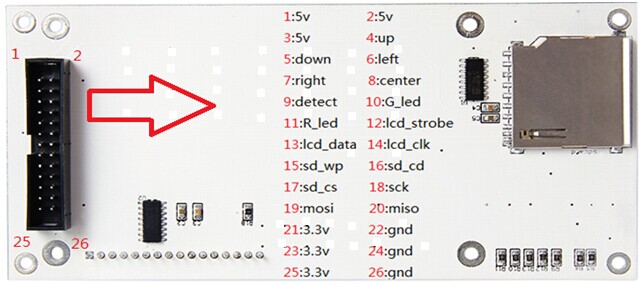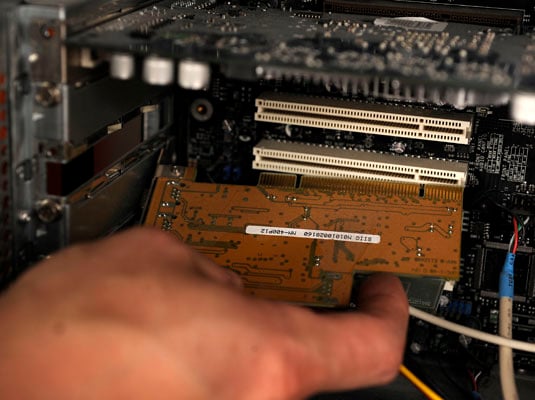Main Board Expansion Slots
.png?width=750&name=PCIe Announcement (4).png)
An expansion card is an electronic circuit board that adds more functionality to a desktop computer. These cards are installed into the expansion slot of a computer motherboard, and they allow the computer to perform additional functions not offered by the motherboard. Video cards and sound cards are common examples: a new video card added will enhance the three dimensional graphics processing power of a computer while a new sound card may improve a computer’s audio input.
There are alternative terms used for this type of card, and it is also known as expansion board, add-on card, interface adapter or an internal card. Generally, between one and seven expansion cards can be installed into the desktop computer system. Laptops do not use standard cards due to their small form factor, although they can often accept a removable PCMCIA card that offers additional functions.
An expansion slot is a socket on the motherboard that is used to insert an expansion card (or circuit board), which provides additional features to a computer such as video, sound, advanced graphics, Ethernet or memory. Expansion slots are for exactly what their name implies: Expanding the capabilities of the system. History lesson: A contemporary personal computer has many features 'on board' that used to be offloaded to expansion slots. SUPERMICRO MBD-H11SSL-I Mainboard, Installed with AMD EPYC Rome 32 Cores 7502P CPU. CPU Type: Single AMD EPYC 7000-series Processor Number of DDR4 Slots: 8 x 288-pin DDR4 Standard: DDR4 2666. INTERNAL EXPANSION. Welcome to a guide on the types of computer expansion cards and the types of expansion slots. While many devices have taken on the more convenient USB forms these days, there are still some good expansion cards that you can add on to your computer.
The Altair 8800, developed in the mid 1970s, was the first microcomputer to add an expansion card bus. In 1981, IBM® launched its first PC with an XT bus, which was later replaced with a 16-bit ISA. The introduction of the PCI bus in 1991 resulted in modern forms of interface adapters that provided additional benefits beyond enhanced graphics and sound.

Most cards are inserted in PCI or “Peripheral Component Interconnect” slots, which are integrated circuits fitted onto the motherboard. One edge of the card holding the contacts or keys is inserted into the slot. This establishes an electrical contact between the motherboard and the card’s integrated circuits.
Standard interface adapters, such as graphics cards and sound cards, offer various added functions. Some video cards offer video capture, MPEG 2 and MPEG 4 decoding, a light pen, and the ability to connect to multiple monitors, for example. Sound cards may add functions for composing music, editing audio presentations, and other multimedia applications.
There are some “low-profile” cards that fit in a lower height computer framework. Some are used solely for external connectivity such as modem cards, storage area network (SAN), and network cards, which are commonly referred to as I/O cards or input/output cards. A USB card is mainly used by users who need additional USB or Firewire ports.
A PC expansion card can only be inserted on computers with available expansion slots. Computers such as the Apple Macintosh® and other all-in-one systems do not accept these cards.
Alternatively known as a bus slot or expansion port, an expansion slot is a connection or port inside a computer on the motherboard or riser card. It provides an installation point for a hardware expansion card to be connected. For example, if you wanted to install a new video card in the computer, you'd purchase a video expansion card and install that card into the compatible expansion slot.
Computer expansion slots
Below is a listing of expansion slots commonly found in a computer and the devices associated with those slots. Clicking on any of the links below provide you with additional details.
- AGP - Video card.
- AMR - Modem, sound card.
- CNR - Modem, network card, sound card.
- EISA - SCSI, network card, video card.
- ISA - Network card, sound card, video card.
- PCI - Network card, SCSI, sound card, video card.
- PCI Express - Video card, modem, sound card, network card.
- VESA - Video card.
Many of the above expansion card slots are obsolete. You're most likely only going to encounter AGP, PCI, and PCI Express when working with computers today. In the picture below is an example of what expansion slots may look like on a motherboard. In this picture, there are three different types of expansion slots: PCI Express, PCI, and AGP.
How many expansion slots does my computer have?

Every computer motherboard is different, to determine how many expansion slots are on your computer motherboard identify the manufacturer and model of the motherboard. Once you've identified the model of motherboard, you can find complete information about the motherboard in its manual.
Adding additional expansion slots for older motherboards could be accomplished by using a riser board, which would add several ISA or PCI slots. Today, riser boards are rarely used with motherboards, as there is limited need for additional expansion slots with modern motherboards.
What type of expansion slots are on my motherboard?

As mentioned above, every motherboard model is unique, so to determine the type of expansion slots on the motherboard, consult the board's specifications and owner's manual. You can also open the computer case and visually examine the motherboard.
Why do computers have expansion slots?
Computers have expansion slots to give the user the ability to add new devices to their computer. For example, a computer gamer may upgrade their video card to get better performance in their games. An expansion slot allows them to remove the old video card and add a new video card without replacing the motherboard.
What is the most common expansion slot today?
Today, the most commonly used expansion slot used and found on computer motherboards is the PCI Express expansion slot.
Does a laptop have an expansion slot?
Laptops do not have expansion slots like a desktop computer. However, some laptops do have PC Cards that can be inserted into the side of the laptop. They may also have a Cardbus slot for an ExpressCard to be added.
Main Board Expansion Slots Free Play
Related expansion slot pages
Main Board Expansion Slots Vegas World
Expansion, Expansion card, Motherboard terms, Seated